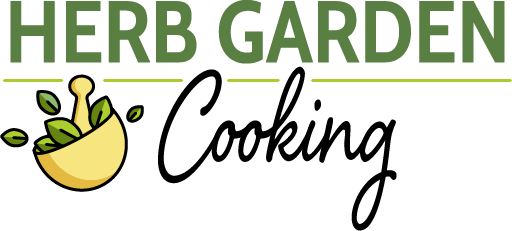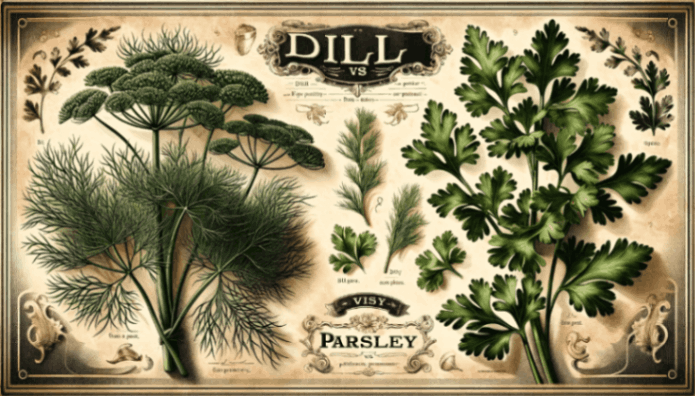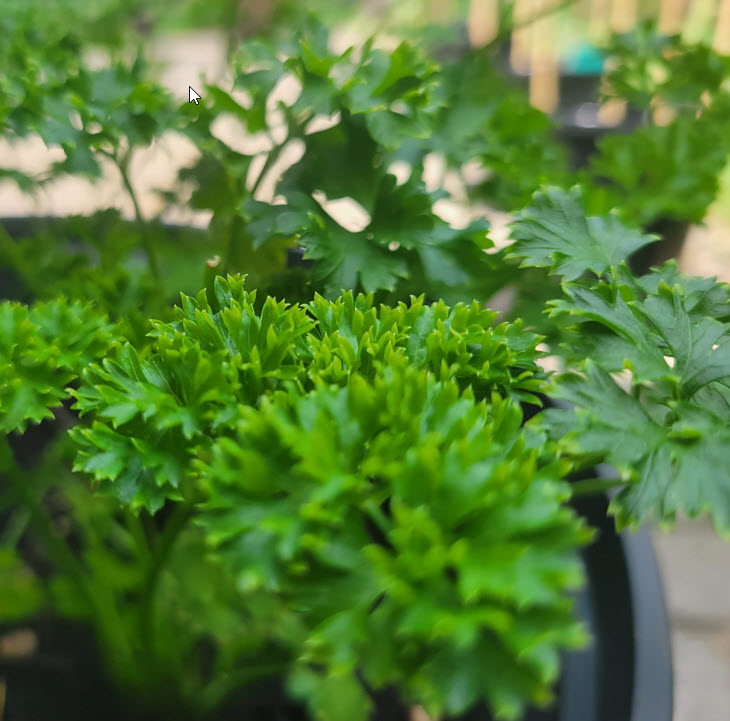This post may contain affiliate links which means I may receive a commission for purchases made through links. I only recommend products that I have personally used. As an Amazon Associate I earn from qualifying purchases. Learn more on my Private Policy page.
Exploring the rich flavors of herbs like dill and parsley can elevate your cooking to new heights. Each herb offers a unique taste profile and enhances dishes in different ways. But when should you use dill, and when is parsley the better choice?
Dill, with its grassy and lemony flavor, is ideal for seafood and pickling. Parsley, having a bright and peppery taste, is best for salads, soups, and Mediterranean dishes. Each herb serves distinct culinary purposes, with dill suiting lighter meals and parsley complementing heavier flavors.
Let’s dive deeper into the world of dill and parsley to explore their unique flavors, versatile substitutions, and varied culinary uses.
Table of Contents
Flavor Profile of Dill vs Parsley
Dill: Delicate Grassy Essence
Dill is known for its delicate grassy flavor, a slight hint of licorice, and fresh, lemony undertone. In culinary use, dill imparts a refreshing and bright note to dishes. Its subtlety makes it perfect for enhancing lighter fare such as seafood and fish dishes and in pickling processes where it adds a unique tanginess.
Parsley: Bright and Peppery Subtlety
Parsley has a bright and clean flavor, characterized by its mild peppery taste with a subtle hint of bitterness. Parsley is versatile in culinary applications, serving as a garnish and a key flavor enhancer. Its distinct taste adds depth to various dishes, from salads and soups to stews. Parsley’s mild bitterness is particularly effective in balancing richer, heavier flavors, making it a staple in Mediterranean cuisine for dishes like tabbouleh salad and chimichurri sauce.
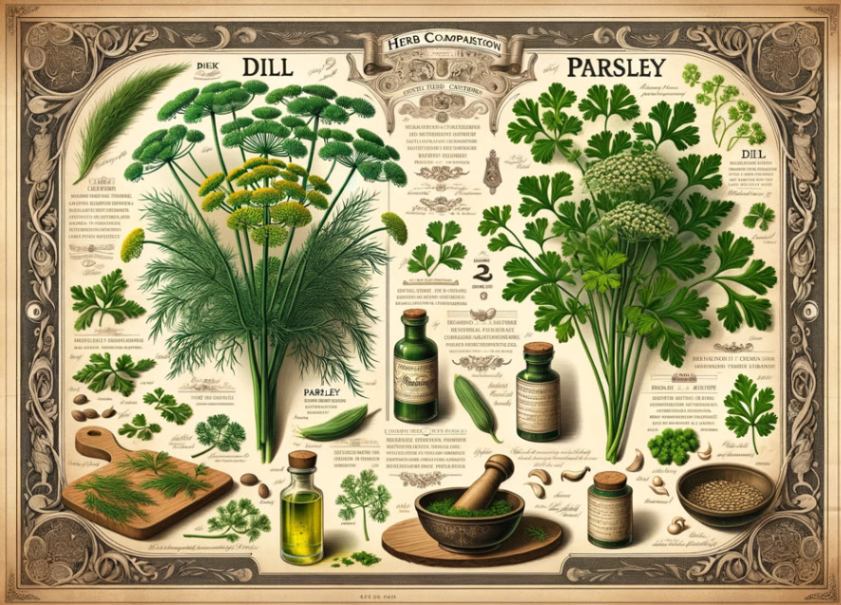
Dill and Parsley: A Side-by-Side Comparison
In the culinary world, dill and parsley are distinct yet essential herbs. Dill’s delicate, licorice-like flavor is perfect for seafood and pickling, whereas parsley’s bright, peppery taste enhances salads and Mediterranean dishes. Understanding these distinct profiles can help you select the appropriate herb to enhance your dishes.
| Dill | Parsley | |
|---|---|---|
| Flavor Profile | Delicate, grassy, slight licorice-like, lemony undertone | Bright, clean, mild peppery, subtle bitterness |
| Aroma | Fragrant, slightly sweet | Fresh, slightly peppery |
| Culinary Uses | Seafood dishes, pickling, sauces | Salads, soups, garnish, Mediterranean dishes |
| Common Pairings | Fish, cucumber, yogurt | Tomatoes, garlic, lemon |
| Cuisines | Scandinavian, Eastern European, Mediterranean | Mediterranean, Middle Eastern, European |
| Fresh vs Dried | Best used fresh, but available dried | Commonly used both fresh and dried |
| Substitutions | Fennel, tarragon, fresh chives | Chervil, cilantro, basil |
Dill and Parsley Substitutions
While dill and parsley can occasionally be substituted for each other in a pinch, especially in garnishing, their unique flavor profiles are best suited to their specific culinary roles. Substituting dill and parsley when cooking can significantly alter the taste of a dish.
So, what are some good substitutes for dill or parsley in culinary applications? Let’s explore some common replacements for each of these herbs.
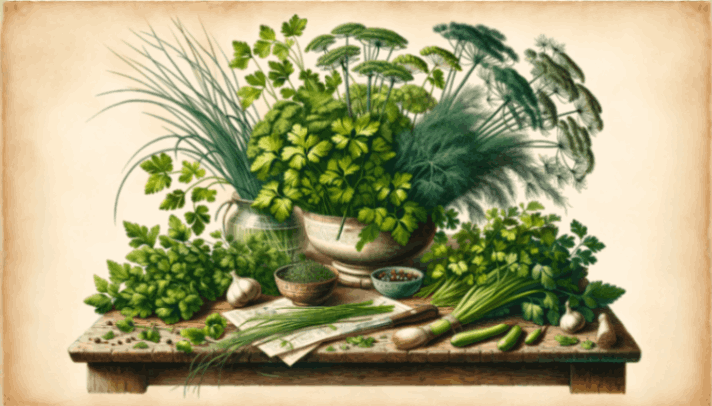
Substituting Dill: Your Go-To Options
Some common substitutions for dill include:
- Tarragon: Sharing similar characteristics with dill, tarragon offers a bittersweet taste with hints of licorice, which is great for sauces and seafood.
- Fennel Fronds: Ideal for adding freshness to salads and garnishes, fennel fronds have a mild anise flavor similar to dill that complements a variety of dishes.
- Fresh Chives: Provides a mild onion-like taste, suitable for dips and dressings. While not a direct substitution for dill, chives can add a subtle savory note to many dishes that dill is used in without overwhelming other flavors.
Parsley Substitution Options in Cooking
Some good parsley substitutes in culinary applications include:
- Chervil: With its delicate flavor and light anise undertone, chervil is an excellent substitute for parsley. It is great for garnishes and in French cuisine. Chervil features delicate leaves with anise and parsley-like flavors suitable for soups and stews.
- Cilantro: With its fresh, citrusy flavor, cilantro can serve as an effective parsley substitute in many situations. Best suited for Mexican, Asian, or Middle Eastern dishes, cilantro offers a more robust taste than parsley’s mild profile. Its distinctive flavor can be overpowering for some, so using it in moderation is recommended.
- Basil: Suitable for Italian and Mediterranean dishes, it has a slightly sweet and peppery taste, making it a good replacement for parsley in pasta dishes and sauces.
Culinary Applications of Dill and Parsley
Exploring the culinary diversity of dill and parsley, these herbs stand out for their unique flavors and versatility in cooking. More than just garnishes, they are essential ingredients that elevate dishes with distinctive tastes. Let’s explore how each herb can enhance your culinary creations.
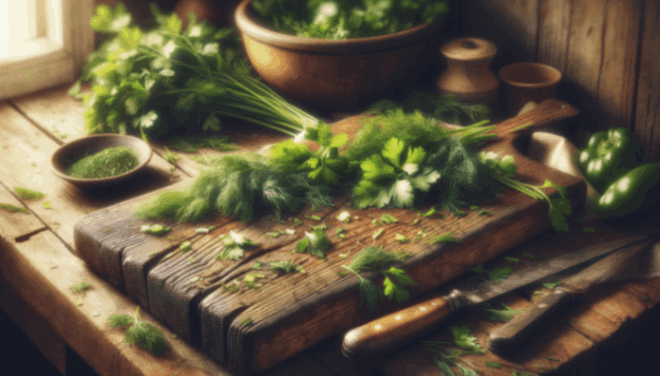
The Culinary Versatility of Dill
Dill is a herb cherished for its unique, slightly tangy flavor, enhancing a variety of dishes across global cuisines.
- Pickling: Dill is a key ingredient in pickling, lending a distinctive taste to cucumbers, onions, and other vegetables, especially when combined with vinegar.
- Seafood Complement: It’s widely used in seafood, perfect for seasoning grilled fish like salmon or trout and enriching creamy sauces for pasta dishes.
- Dairy Pairing: Dill pairs well with dairy, often added to dips, dressings, and sauces such as tzatziki, a Greek sauce made with yogurt, cucumber, garlic, and lemon juice.
- Scandinavian Cuisine Staple: In Scandinavian dishes, especially gravlax, dill is essential, creating a flavorful marinade with salt and sugar for cured salmon.
Dill’s ability to adapt and enhance flavors across various culinary applications, from pickling to seafood, underscores its role as a go-to herb in diverse cooking traditions.
Parsley: A Staple in Diverse Culinary Traditions
Parsley, known for its mild flavor and versatility, is a fundamental herb in various global cuisines.
- Garnishing: Commonly used as a garnish, parsley adds a vibrant green touch and subtle herbal flavor to soups, stews, salads, and roasted vegetables.
- Mediterranean Cuisine: In dishes like tabbouleh, a Lebanese salad, parsley is mixed with bulgur wheat, tomatoes, onions, lemon juice, and olive oil, creating a refreshing and flavorful salad.
- Italian Cooking: Essential in Italian cuisine, parsley forms part of gremolata – a mix of parsley, garlic, and lemon zest – used to brighten dishes like osso buco and grilled meats.
- Pesto Variations: While basil is primary in traditional pesto, adding parsley offers an intriguing twist, creating a vibrant sauce ideal for pasta or as a sandwich spread.
Parsley’s ability to subtly enhance a range of dishes, from garnishes to key ingredients in Mediterranean and Italian recipes, demonstrates its valued role in diverse culinary practices.
Combining Dill and Parsley in the Kitchen
The fusion of dill and parsley in cooking can significantly elevate the flavors of your dishes. Here’s how this herb duo works together:
- Flavor Synergy: Dill’s lemon-anise flavor pairs beautifully with parsley’s peppery notes, offering a balanced, herby enhancement to various recipes.
- Depth and Complexity: This combination combines dill’s bright notes and parsley’s earthy taste, adding complexity to simple and intricate dishes.
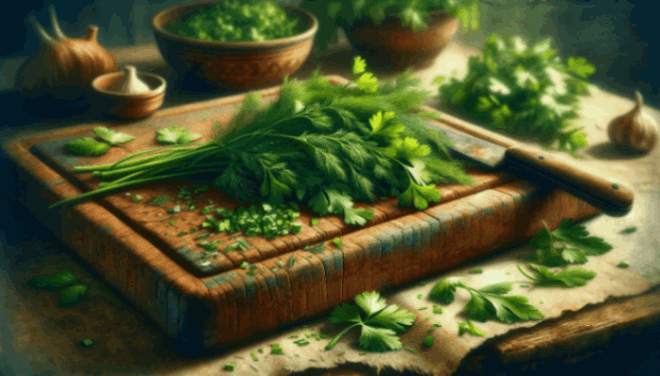
Culinary Uses of Dill and Parsley
Cooking with dill and parsley together can enhance a range of dishes:
- Cuisine Compatibility: Ideal for Mediterranean and European dishes, they enhance Greek salads, tzatziki, seafood stews, and herbed butter.
- Ideal Pairings: These herbs work exceptionally well with fish, poultry, and vegetables, enhancing these ingredients’ natural flavors.
Usage Tips for Dill and Parsley
Let’s look at some key tips for using dill and parsley to preserve their aroma and flavor.
- Adding at the End: Add dill and parsley towards the end of cooking for optimal flavor and nutrient retention.
- Balancing Flavors: Begin with small amounts and adjust as needed, ensuring they complement rather than overpower the dish.
The combination of dill and parsley can significantly boost the flavor profile of various dishes. Their complementary tastes offer a harmonious blend that suits various cuisines and ingredients, making them an excellent duo for elevating your culinary endeavors.
Dill vs Parsley in the Herb Garden
Growing Dill and Parsley Together: Similar Cultivation Needs
Dill and parsley, popular in herb gardens, can be planted together due to their similar cultivation needs.
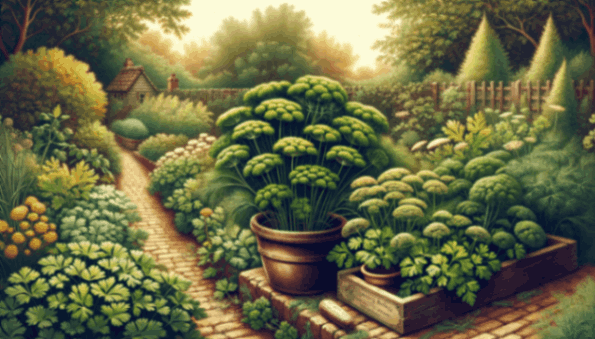
- Light and Soil Preferences: Both herbs flourish in full sun or partial shade and favor well-drained, organically rich soil.
- Watering Requirements: Regular watering is key, maintaining evenly moist soil without over-saturating.
- Growth Habits and Maintenance: While dill grows taller (up to three feet), parsley is more ground-hugging. Regular pruning benefits both promoting bushier growth and preventing premature bolting.
Dill and Parsley Planting Considerations
Although dill and parsley can grow together, some gardeners don’t recommend interplanting members of the Apiaceae family together, to which both dill and parsley belong due to their shared susceptibility to certain pests.
While dill is known for attracting beneficial insects like ladybugs and lacewings, which prey on aphids and other garden pests, it can also attract harmful insects such as carrot rust flies that can damage parsley and other members of the Apiaceae family.
For a more in-depth exploration of what grows well with these two herbs (and what doesn’t), check out my companion planting guides below:
Good Companions for Asparagus and Corn
Dill and parsley are excellent companion plants for asparagus and corn, offering several mutual growth and pest control benefits.
- Asparagus and Dill: Dill naturally deters pests like asparagus beetles and attracts beneficial insects, aiding in pest control for asparagus.
- Corn and Parsley: Parsley lures insects that prey on common corn pests, and its dense foliage can shade corn bases, helping to retain soil moisture.
Dig Deeper: Explore These Comprehensive Herb Guides
Parsley: A Comprehensive Guide
Parsley is a Mediterranean herb with a rich history used for culinary and medicinal purposes since ancient times. Parsley is both easy to cultivate and incredibly versatile in the kitchen. Read More…
Dill: A Complete Guide
Dill is a delicate herb from the Apiaceae family with feathery leaves and yellow flowers. Dill is commonly grown in home gardens due to its ease of cultivation and versatile culinary uses. Read More…
Conclusion
When used in cooking, Dill and parsley have unique and essential roles in enhancing flavors. Their culinary applications highlight the distinct and irreplaceable contributions each herb makes.
Dill, with its delicate grassy and lemony undertones, is a key player in seafood dishes, pickling, and Scandinavian cuisine.
In contrast, parsley, known for its vibrant and mildly spicy taste, is highly regarded in Mediterranean and Italian cuisine. It shines as a decorative element and a means to elevate the flavor profile of various dishes.
Their versatility extends to the garden as well, where they share similar cultivation needs but should be planted with consideration due to potential pest attraction.
Understanding dill and parsley’s unique characteristics and uses can greatly enhance your culinary and gardening experiences, whether in the kitchen or the garden.
Frequently Asked Questions
What are the flavor profiles of dill and parsley?
Dill has a distinct, slightly sweet flavor with hints of anise and lemon. Parsley, on the other hand, has a fresh, mild taste with a hint of bitterness. Dill adds a unique tanginess to dishes, while parsley brings a bright and herbaceous note.
Can dill substitute for parsley?
While dill can provide a different flavor profile, it can be used as a substitute for parsley in certain recipes. However, it’s important to note that the taste will differ. Dill works well in dishes like salads, pickles, and seafood preparations where its distinct flavor is desired.
What herb is the same as dill?
No herb is exactly the same as dill, but tarragon and fennel fronds are commonly used as substitutions due to their similar flavor profiles. Tarragon offers a bittersweet taste with hints of licorice, and fennel fronds have a mild anise flavor, both of which can complement dishes in a way similar to dill.
What herb is the most similar to parsley?
Chervil is the herb most similar to parsley. It is known for its delicate flavor and light anise undertone, making it an excellent substitute in various culinary applications, especially for garnishes and dishes like soups and stews.
How can I use dill and parsley in cooking?
Dill is commonly used in dishes like gravlax (cured salmon), potato salad, tzatziki sauce, and soups. Parsley is versatile and adds freshness to various cuisines such as Mediterranean, Middle Eastern, and Italian. It can be used as a garnish or added to sauces, marinades, salads, and pasta dishes.
Does dill taste like parsley?
Dill does not taste like parsley. Dill has a delicate grassy flavor with a hint of licorice and a fresh, lemony undertone, while parsley offers a bright and clean taste with a mild peppery flavor and a subtle hint of bitterness. These distinct flavor profiles make dill and parsley unique in their culinary uses.
Can I grow both dill and parsley in my herb garden?
Both dill and parsley are easy to grow in herb gardens or even small pots. They require similar growing conditions: full sun or partial shade with well-draining soil.
How can I combine dill and parsley when cooking?
Combining dill and parsley can enhance the flavors of your dishes. Use them together in recipes like herbed butter for grilled meats or fish, green goddess dressing for salads or vegetables, or as an aromatic addition to roasted potatoes or vegetable medleys.
Last Updated on 16 December 2023 by Bob Lee
